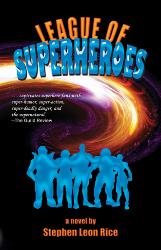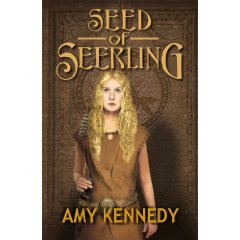 Seabird by Sherry Thompson, a review
Seabird by Sherry Thompson, a review
Book One of the Narentan Tumults
Published in 2007 by Gryphonwood Press, 349 pages
Worldview: Christian
At the beginning of this young-adult novel, Cara Marshall, age 17, is beginning a beach vacation with her family. She buys a silver seabird necklace. When she puts it on, she is suddenly transported to another world, Narenta, a place like our world and yet not like it.
The Narentans make it clear they expect great things from her. They tell her she has a perilous task to do, as an Outworlder, to help them. But Cara isn’t attached to Narenta and sees no reason to help the people there. She wants no part of the quest they would impose on her. She demands to go home, but finds no way to leave. A new twist on Oz!
She flees and finds she is placing herself and others in deadly peril, as evil sorcerers seek to kill her. She repents and decides to help the Narentans, but not before a kindly couple is dead because of her detour.
Cara is rescued by two enchanters, who do “good” magic and are followers of Alphesis (Jesus), and two seabirds who are sentient beings on Narenta, larger than eagles and full of warmth and good humor. Together, their path leads to a monastery island where Cara meets Alphesis and learns more of her task. She gradually learns to trust Alphesis and becomes braver.
Meanwhile, the evil sorcerers are declaring war on the good Narentans. Cara’s quest, if it succeeds, will allow the good Narentans to win. If it fails, they will lose.
Does she succeed? And does Alphesis allow her to return to our world?
I really enjoyed this book. Sherry Thompson excels at character development. She gets inside Cara’s self-centered head very well, and also shows her gradual turnaround. Other characters are shown in consistent detail as well. Cara must learn to trust that Alphesis will tell her what her next step is at the right moment. So this book does model the Christian walk well.
The world Thompson creates is one where good and evil may be easier to spot than in our world. Alphesis is front-and-center: there is no one who thinks he doesn’t exist. His action in history is obvious, destroying a sorcerer’s castle and locking the sorcerers up for millennia. We glimpse Alphesis’ action in history in snatches here and there, Tolkien-style.
But there are plenty of illusions as well, created by the evil sorcerers and by the good enchanters. There are imaginative details, such as woods full of copper-colored leaves, not green leaves, and “serpent-hawks.”
A drawback: a number of the characters have names starting with HA. Halprin, Harone, Hathel. I had a little trouble keeping them straight, even though they are very different characters. The two seabirds also have similar names, which also was a stumbling block for me. In addition, the opening scene (which gets the plot rolling) is disconnected from what follows immediately, and so I forgot it completely until I went back to look over the book after I had finished.
Because the protagonist is a typical 17-year-old girl who is eventually enabled to do brave things, I expect girls will like this book. There is also a minor love-interest, which may widen the appeal. The book also has plenty of action. Sherry Thompson is working on a sequel, Earthbow. I’ll be looking forward to reading it.–Phyllis Wheeler
Thinking of buying this book? You can help support this blog by buying it through me.



